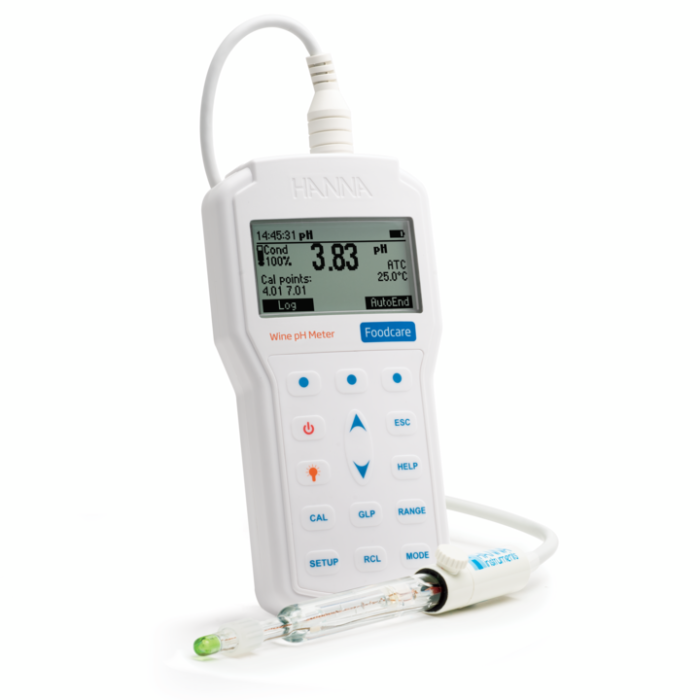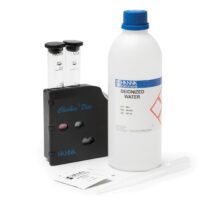Description
The first essential step to producing a high quality is to measure the pH of juice and must. A variety of factors and processes depend on pH including microbial stability, sulfur dioxide effectiveness, malolactic fermentation performance, protein stability, and sensory attributes.
A wines microbial and chemical stability is influenced by pH due to the influence it has on the various forms of sulfur dioxide that will be present. Sulfur dioxide is responsible for protecting wine against oxidation and microbial activity. The molecular form of sulfur dioxide is most effective against microbes and is predominate at lower pH values. As the winemaking process progresses pH levels can change due to acid conversion and other metabolic activity. These changes require frequent monitoring of the pH values and sulfur dioxide levels of wine being stored or aged.
Most wines have a pH value between 3.0 and 4.0. White wines tend to have pH values between pH 3.0 and 3.3, while higher pH values between 3.3 and 3.5 are more common for reds. Red wines sometimes have a higher pH, in part, due to the longer contact time the grape juice has with the grape skins. Early in the winemaking process and sometimes at points throughout, it may be necessary to make acid additions in order to set and maintain an optimum pH range for the desired style or condition of the wine. The pH of finished wine may also affect its color. For example, pigment compounds in the wine express different hues of color depending on the pH.
On-Screen Features
Backlit Graphic LCD Display
These meters feature a backlit graphic LCD with on-screen help. The graphic display allows for the use of virtual keys to provide for an intuitive user interface.
pH Calibration
Choose from seven standard pH buffers and five custom values to obtain up to five-point calibration and achieve high precision readings with a 0.001 pH resolution and a pH accuracy of ±0.002.
GLP
Comprehensive GLP functions are directly accessible by pressing the GLP key. Calibration data, including date, time, and calibration values are stored with logged data for retrieval at a later time.
Cal Check™
Hanna’s CAL Check maintains a history of past calibrations and monitors the pH electrode and buffers during subsequent calibrations for any signs of wide variances due to a dirty or broken electrode or contaminated pH buffers. During calibration, users are alerted to problems should they occur. After calibration, the electrode’s overall condition is displayed as a percentage.
Data Logging
The log-on-demand feature allows users to store up to 200 samples that can later be transferred to a PC with the HI920015 USB cable and HI92000 software.
Auto Hold
Pressing Auto End during measurement will automatically hold the first stable reading on the display.














